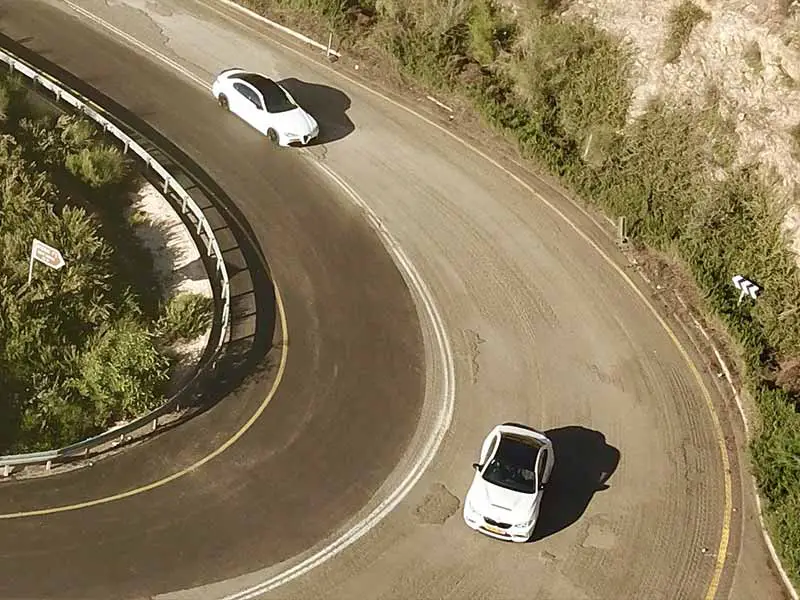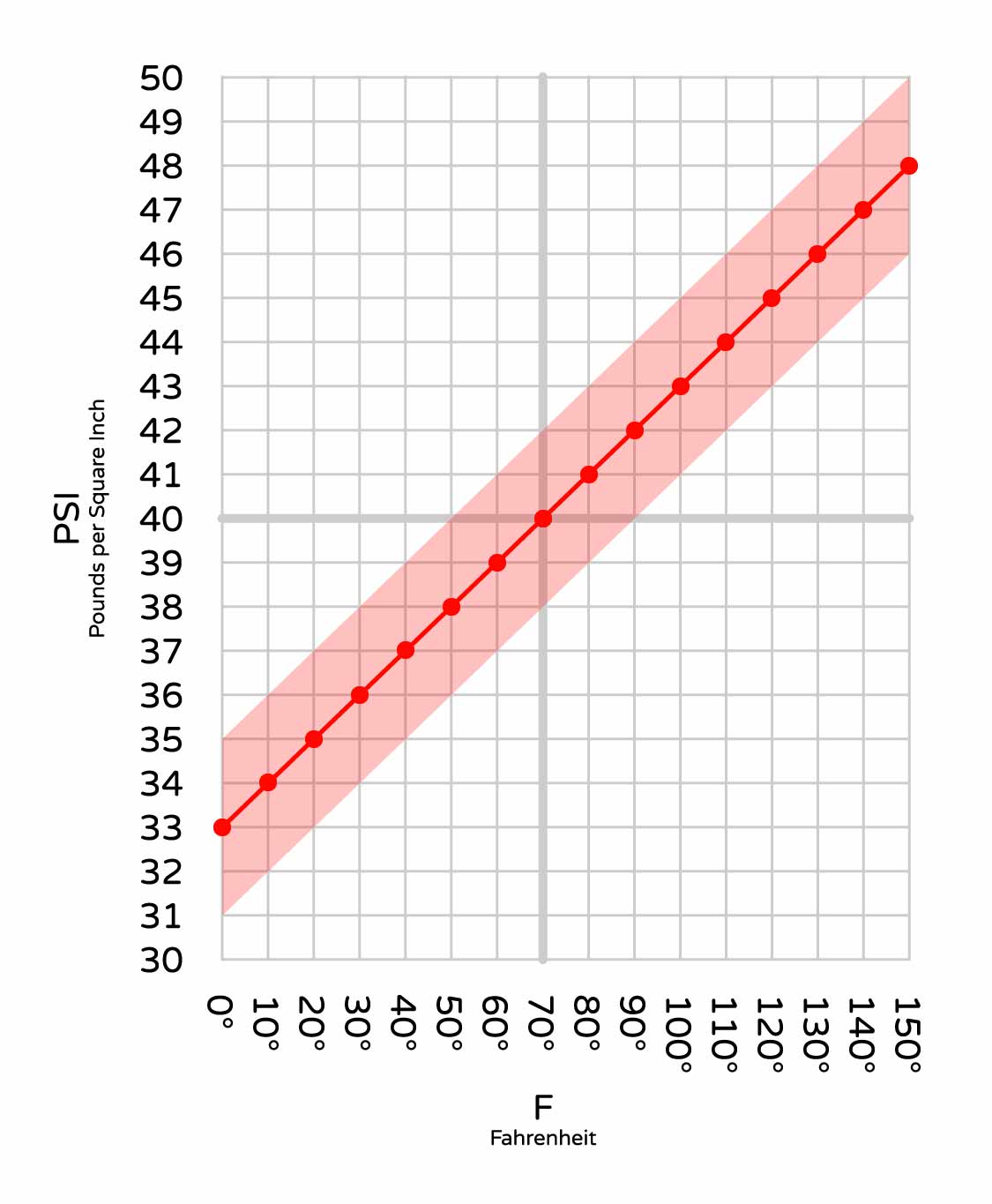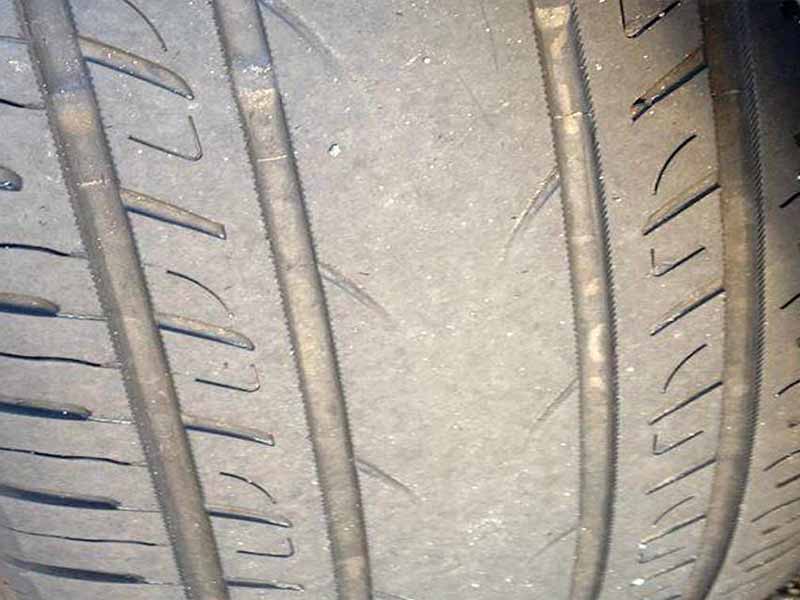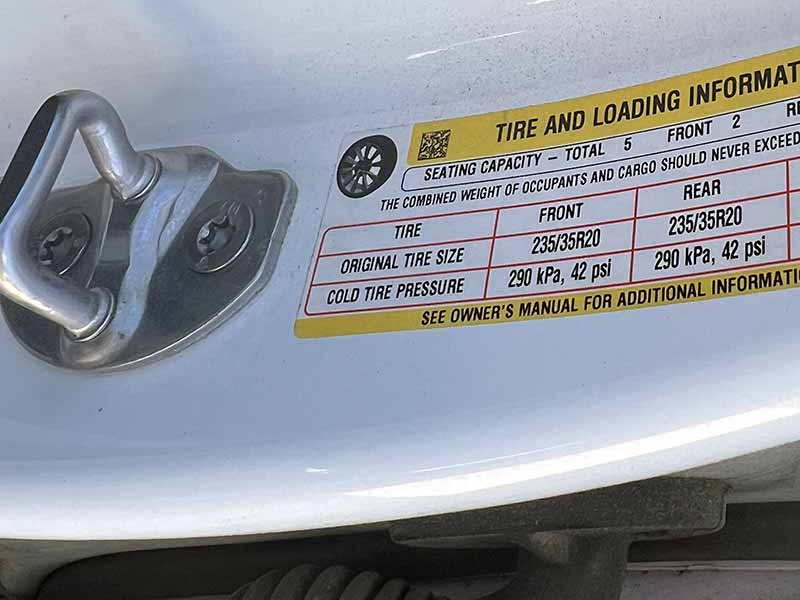Are you wondering exactly what temperature is considered “cold” when it comes to tire pressure?
It’s a common question, and for a good reason. It’s a bit vague and unclear if you don’t understand the reason behind it.
What Temperature Is Cold Tire Pressure?
Cold tire pressure is the tire’s temperature before it’s been driven on. It’s not a specific temperature measurement. When you start driving, your tires heat up, which causes the air inside to expand, and this increases the tire pressure.
This is why you should always check your tire pressure before they heat up from driving on them to make sure that you’re getting an accurate reading.
In this article, we’ll be covering everything you need to know about cold tire pressure, including what it is, why it matters, and how you can make sure your tires are at the correct pressure at any temperature.
Let’s take a closer look.

What Is Cold Tire Pressure?
The tire information sticker on your driver’s door jamb lists the “Cold Inflation Pressure”.
Cold tire pressure refers to the air pressure in your tires when they’re at their coolest temperature, which is typically when your vehicle hasn’t been driven for at least three hours or when you’ve only driven for a short distance.
Why does this matter? When you start driving, your tires heat up, and the air inside expands, which can increase the tire pressure. That’s why it’s important to check your tire pressure when they’re cold to get an accurate reading of how much air you actually need to add or remove from your tires.
Cold Tire Pressure Vs Hot
We’ve pretty thoroughly explained cold tire pressure. Let’s explain the differences between what we now know about cold tires and hot tires.
Hot tire pressure is the air pressure in your tires when they’re at their hottest temperature, which is usually after you’ve been driving for a while. When your tires heat up from driving, the air inside expands, causing the tire pressure to increase.
But why does hot tire pressure matter? If your tire pressure is too low when it’s cold, it can lead to increased heat buildup in the tire, which can cause the tire to wear out more quickly or even lead to a blowout. When your tire pressure is too high when it’s hot, it can cause the tire to become overinflated, leading to poor handling and a bumpy ride.

How Hot Do Tires Get When Driving?
Tires can get pretty hot when you’re on the road, especially if you’re driving for an extended period of time or in hot weather conditions.
On average, tires can reach temperatures of around 150 to 200 degrees Fahrenheit when you’re driving. This heat is generated by the friction between the tires and the road surface, as well as the movement of the tire itself. The amount of heat depends on many different factors, such as the type of tire, the weight of your vehicle, the driving conditions, and your speed.
If your tires get too hot, it can lead to issues like tire blowouts or premature wear and tear. That’s why it’s important to check your tire pressure regularly and keep it at the recommended level for your vehicle.
Underinflated tires can generate more heat and cause additional stress on your tires, while overinflated tires can cause poor handling and a bumpy ride.
How Much Does Tire Pressure Increase When Hot
On average, tire pressure can increase by 1-2 PSI (pounds per square inch) for every 10 degrees Fahrenheit increase in temperature. So, if your tires started out at 40 PSI on a 70-degree day and you’ve been driving for a while, you can expect the tire pressure to increase by around 8-10 PSI for a total pressure of 48-50 PSI.
Remember, this is just an average estimate. The actual increases in tire pressure can vary depending on a variety of factors, including:
- Type of tire
- Weight of your vehicle
- Driving conditions
Tire Pressure Vs Temperature Chart

Tire Pressure Temperature Calculator
Putting Air In Tires When Hot
When your tires are hot, the air inside them has expanded, causing the tire pressure to increase. When you add air to a hot tire, you risk overinflating it. This can lead to poor handling, a bumpy ride, and even tire blowouts.
It’s recommended to wait until your tires have cooled down before checking or adding air. Ideally, you should check your tire pressure when your vehicle hasn’t been driven for at least three hours or when you’ve only driven for a short distance. This will give you an accurate reading of the air pressure you actually need.
If you need to add air to your tires, use a reliable tire pressure gauge and add air gradually, checking the pressure after each addition. Remember to keep your tire pressure at the recommended level for your vehicle, which can be found in your owner’s manual or on a sticker inside the driver’s side door.

How Often Should You Check Your Tire Pressure?
It’s recommended to check your tire pressure at least once a month or more frequently if you’re taking a long road trip or driving in extreme weather conditions.
Checking your tire pressure regularly can help prevent potential safety hazards, such as tire blowouts or poor handling. It can also save you money in the long run by improving fuel efficiency and extending the lifespan of your tires.
When checking your tire pressure, it’s important to do so when your tires are cold, meaning they haven’t been driven for at least three hours. This will give you an accurate reading of the tire pressure you actually need.
To check your tire pressure, you’ll need a reliable tire pressure gauge. Simply unscrew the valve cap on each tire, press the gauge onto the valve stem, and record the pressure reading. If the pressure is too low, add air gradually and check the pressure again until it’s at the recommended level for your vehicle.
Remember, each vehicle has a specific recommended tire pressure, which can be found in your owner’s manual or on a sticker inside the driver’s side door. Following this recommended pressure is important rather than just inflating your tires to the maximum PSI listed on the tire itself.
We Recommend A Quality Portable Air Compressor To Make Maintaining Air Pressure Convenient. Also Extremely Useful During Roadside Emergencies.
Importance Of Tire Pressure
Maintaining the correct tire pressure is crucial for safe and efficient driving, as well as extending the lifespan of your tires.
When your tires are underinflated, they can generate more heat and cause additional stress on the tire, which can lead to premature wear and tear or even tire blowouts. On the other hand, overinflated tires can cause poor handling, a bumpy ride, and increase the risk of tire damage.
In addition to safety concerns, maintaining the correct tire pressure can also improve fuel efficiency and save you money at the gas pump. Underinflated tires can cause your vehicle to work harder to move, which can decrease your gas mileage and cost you more money in the long run.
To ensure that your tires are at the right pressure, it’s recommended to check them regularly, especially when they’re cold. This will give you an accurate reading of how much air you need to add or remove from your tires to keep them at the recommended pressure for your vehicle.
Remember, each vehicle has a specific recommended tire pressure, which can be found in your owner’s manual or on a sticker inside the driver’s side door. It’s important to follow this recommended pressure rather than just inflating your tires to the maximum PSI listed on the tire itself.
Resources
Below are some links you may find helpful when learning about tires
- How does temperature change affect tire pressure – Tire Rack
- How to check tire pressure with a tire pressure gauge – Bridgestone
Final Thoughts
We hope you now have a better understanding of what cold tire pressure is, why it matters, and how to maintain the correct tire pressure at any temperature.
Remember, keeping your tires properly inflated can not only improve your safety on the road, but it can also save you money in the long run. So, be sure to check your tire pressure regularly and adjust it as needed to ensure a smooth and efficient driving experience.
Good luck and happy motoring.





